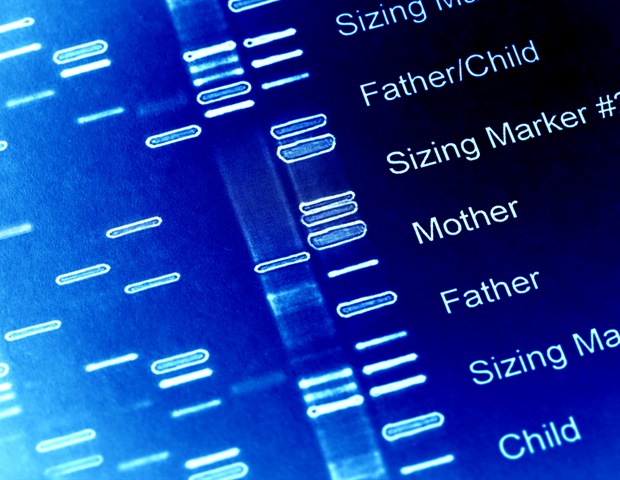Researchers on the Francis Crick Institute, King’s Faculty London and College Faculty London have make clear the genetics at the back of modifications within the construction and form of the face and head in a mouse fashion of Down Syndrome.
Described in a paper revealed these days in Building, the researchers discovered that having a 3rd reproduction of the gene Dyrk1a and a minimum of 3 different genes have been chargeable for those modifications going down in building – known as craniofacial dysmorphology – which contain shortened back-to-front duration and widened diameter of the pinnacle.
Affecting 1 in 800 reside births, Down Syndrome is referred to as a ‘gene dosage dysfunction’ – that means that it comes to modifications within the collection of copies of a gene. Other folks with Down Syndrome have 3 copies of chromosome 21 as a substitute of 2. Having 3 copies of sure genes in this chromosome reasons sides standard of Down Syndrome, however it isn’t but recognized which genes are accountable.
The usage of genetic engineering, groups led by way of Victor Tybulewicz of the Francis Crick Institute and Elizabeth Fisher of College Faculty London created mouse lines with duplications of 3 areas on mouse chromosome 16, which mimics having a 3rd chromosome 21. The mice display a whole lot of characteristics related to Down Syndrome, together with modifications within the form of the face and cranium.
Earlier analysis has related a gene known as Dyrk1a to sides of Down Syndrome, so the researchers sought after to check the way it impacted craniofacial dysmorphology.
Now running with Jeremy Inexperienced’s workforce at King’s Faculty London, they confirmed that mice with an additional reproduction of Dyrk1a had a discounted collection of cells within the bones on the entrance of the cranium and within the face. Additionally, cartilaginous joints on the base of the cranium known as synchondroses have been abnormally fused in combination. Those results have been partially reversed when the 3rd reproduction of Dyrk1a was once got rid of, appearing that 3 copies of Dyrk1a are vital to motive those modifications within the cranium.
The researchers consider that having a 3rd reproduction of Dyrk1a hinders the expansion of neural crest cells which might be had to shape the bones on the entrance of the cranium.
Along with Dyrk1a, the analysis confirmed that 3 different genes additionally give a contribution to the modifications within the cranium, however extra analysis is had to ascertain their identification.
Victor Tybulewicz, Workforce Chief of the Down Syndrome Laboratory on the Crick, who labored with first creator Yushi Redhead, mentioned: “There may be these days restricted remedies for the sides of Down Syndrome that have a damaging have an effect on on other folks’s well being, like congenital center prerequisites and cognitive impairment, so that you must we figure out which genes are essential.
“Working out the genetics concerned within the building of the pinnacle and face provides us clues to different sides of Down Syndrome like center prerequisites. As a result of Dyrk1a is so key for craniofacial dysmorphology, it is extremely most likely that it is concerned with different modifications in Down Syndrome too.”
Researchers at King’s Faculty London used shape-measuring gear to map the converting cranium form of the mice. Those confirmed modifications in cranium form that have been remarkably very similar to the ones noticed in other folks with Down Syndrome.
With the assistance of nice collaborators on the College of Calgary in Canada and a scientific imaging tool workforce right here at King’s, we have been ready to use each relatively conventional and a few very novel strategies for evaluating advanced anatomical shapes. Those have been delicate sufficient to pick out up variations even at foetal levels. This helped us pin down no longer simplest the places of genes that motive Down Syndrome but in addition get clues as to how the ones genes motive the variations that they do.”
Jeremy Inexperienced, Professor of Developmental Biology, King’s Faculty London
This analysis bureaucracy a part of an ongoing undertaking to grasp the genetics of Down Syndrome. The researchers will subsequent intention to spot the genes concerned with center defects and in cognitive impairment, bringing us a step nearer to figuring out expand focused remedies for sides of Down Syndrome which have an effect on well being.
Supply:
Magazine reference:
Redhead, Y., et al. (2023) Craniofacial dysmorphology in Down syndrome is brought about by way of larger dosage of Dyrk1a and a minimum of 3 different genes. Building. doi.org/10.1242/dev.201077.
Supply By way of https://www.news-medical.internet/information/20230426/Researchers-shed-light-on-the-genetics-behind-facial-changes-in-Down-syndrome.aspx

















